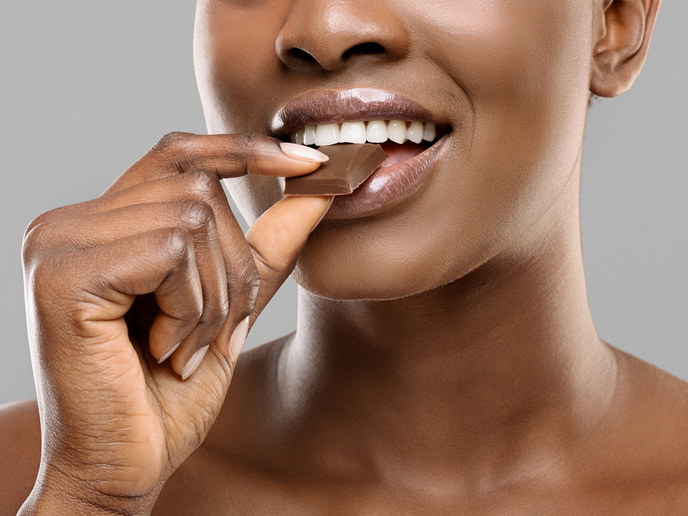Decoding the melt-in-your-mouth mysteries of chocolate
Scientists supported by the EU-funded LubSat project have gained valuable insight into the process that takes place when someone puts a piece of chocolate in their mouth and it begins to melt, providing the smooth texture we all love. The researchers hope that decoding this process could help them develop a new generation of luxury chocolates with the same irresistible texture, but without any guilt attached to the pleasure of eating them. The study(opens in new window) was published in the journal ‘ACS Applied Materials & Interfaces’.
It is all in the lubrication
The chocolate sensation we get in our mouths comes from the way the chocolate is lubricated. Lubrication can be provided by the chocolate’s ingredients, our saliva or a combination of the two. Fat plays an important role almost as soon as a piece of chocolate touches the tongue. After that, the solid cocoa particles that are released become more important in terms of how the chocolate feels in the mouth. This means that fat deeper inside the piece of chocolate plays a more limited role, so reducing it would not affect the chocolate sensation. “Lubrication science gives mechanistic insights into how food actually feels in the mouth. You can use that knowledge to design food with better taste, texture, or health benefits,” explains study senior author Prof. Anwesha Sarkar of LubSat project host University of Leeds, United Kingdom, in a news item(opens in new window) posted on ‘SciTechDaily’. “If a chocolate has 5% fat or 50% fat it will still form droplets in the mouth and that gives you the chocolate sensation. However, it is the location of the fat in the make-up of the chocolate which matters in each stage of lubrication, and that has been rarely researched. We are showing that the fat layer needs to be on the outer layer of the chocolate, this matters the most, followed by effective coating of the cocoa particles by fat, these help to make chocolate feel so good.” For the study, the team used a luxury brand of dark chocolate and conducted tests on an artificial 3D tongue-like surface. Employing analytical techniques from a field of engineering called tribology(opens in new window), they studied the interaction and friction between fluids and surfaces, and the role played by lubrication (i.e. saliva or liquids from the chocolate). They found that the smooth feeling chocolate imparts while in the mouth is provided by a fatty film that it releases when it touches the tongue. “With the understanding of the physical mechanisms that happen as people eat chocolate, we believe that a next generation of chocolate can be developed that offers the feel and sensation of high-fat chocolate yet is a healthier choice,” remarks first author Dr Siavash Soltanahmadi, also from the University of Leeds. “Our research opens the possibility that manufacturers can intelligently design dark chocolate to reduce the overall fat content. We believe dark chocolate can be produced in a gradient-layered architecture with fat covering the surface of chocolates and particles to offer the sought-after self-indulging experience without adding too much fat inside the body of the chocolate.” According to the LubSat (Unravelling Multi-scale Oral Lubrication Mechanisms (macro-to-nano): A Novel Strategy to Target Satiety) researchers, the study’s techniques could also be used to investigate other foods that undergo a phase change, such as ice cream and margarine. For more information, please see: LubSat project web page(opens in new window)



